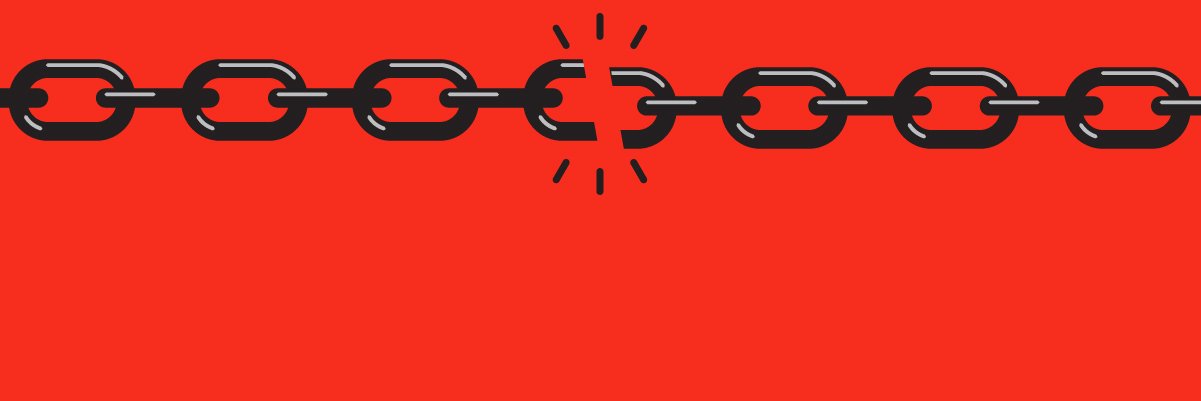The term 'digital transformation' needs a makeover: What would you rename it?

“New Ways of Working (NWoW) is our term. Of course, New Ways of Working
requires quite a few catalysts in the form of culture and technology. "Culture:
Retool your leadership in new ways of leading before you demand your
organization be agile. Agile teams are empowered, cross-functional, and have the
ability to move quickly and test and learn. The role of the leader is not to
tell teams what to do but to create a fertile environment to innovate. The role
of the leader is to create the outcomes and eliminate barriers. Train your
leaders in these new ways of leading before you send your teams off to be agile.
"Technology: Focus on agile infrastructure and data before you demand an agile
work environment. Creating agile teams that are cross-functional and empowered
is a good step. But this only works if you have embarked on your technical
transformation and created the highways to safely and continuously deploy
software. The combination of culture, technology, and agility is creating NWoW."
-John Marcante, Retired CIO, Vanguard
How Weak Analogies About Software Can Lead Us Astray

Software development/design teams are simultaneously understanding problems
while solving them. The team makes dozens of choices every day, ideally informed
by business objectives and user testing and applied architecture and data
cleanliness. ... Likewise, UX design frameworks are usually interpreted by
team-level designers to fit the problem at hand. We’re constantly trading off
consistent look and feel across the application suite against what will help
users at this step. So in the software business, we’re usually solving and
designing and implementing and fixing all at the same time. The hard part isn’t
the typing, it’s the thinking. ... So hiring junior developers or offshoring to
lower the average engineering rate misses what’s most important. Crafting better
software should get us more customers and make us more money. Small teams of
empowered developers/designers/product managers with deep understanding of real
customer problems will out-earn large teams doing contextless color-by-number
implementation of specs. The intrinsic quality of the work matters, which is
lost in a command-and-control organization.
The key skills needed to build diversity, equality, inclusion and belonging in the workplace

It’s up to executives to treat DEIB as a central business function, instituting
and scaling their efforts. Degreed CEO Dan Levin, for example, describes it as a
strategic imperative to integrate DEIB into all aspects of how we operate as a
business, including at board level. ... Managers need to take big picture
initiatives from the C-suite and use them to allocate work and opportunities in
new ways. Those adept at these skills help their staff resolve conflicts and
open their minds to new ideas. ... Two skills are especially important for both
senior leaders and managers, study authors Stacia Garr and Priyanka Mehrotra
write in the report. Respondents at higher-ranked companies for DEIB were more
likely to say that people in both positions should excel at challenging the
status quo and persuasion. I’ve seen leaders and managers faced with the task of
convincing those under them to reconsider how their behaviors or words might
make someone else feel excluded. Those who excel at these types of challenges
have the skills to do so.
How Big Companies Kill Ideas - And How To Fight Back
Google said all the right things. Then over time — after like the first six
months — it became like the Tinder Swindler. I was like, “What happened? Where
is all this great stuff you said we were going to have?” It went out the window.
Over time we were just one toy in the toy box. When you are bought for $3.2
billion, you would think people would actually respect and invest in the team as
a new area of Google’s business. That is not how it worked. Apple is a whole
different story, at least when Steve [Jobs] was there. It was respected when you
did stuff. People took note and tried to make successes. It was my mistake. I
did not realize that Google had gone through many of those billion-dollar
acquisitions and just let them flail. They just said, “Oh, that was a fun ride.
Moving on.” There was no existential crisis because you always had the ad money
tree from search. Then it was just a matter of cutting their losses, as opposed
to seeing that these are real people with families, trying to do right on the
mission to build this thing. They just saw it more as dollars, at least from the
finance side.
Maintaining a Security Mindset for the Cloud Is Crucial

When you look at networking and security, that really hasn’t kept up with the
pace of the application transitions to the cloud. And if you look at what
happens today, is many of these networks — and network and security elements in
those networks — they are do-it-yourself. And the idea that the organizations
are migrating, [that] we would be migrating from this do-it-yourself approach to
as-a-service approach really allows the organizations to unleash the agility and
the simplification that their organizations and enterprises are looking for. Now
we have a lot of examples. Even in very recent times where these do-it-yourself
approaches have failed to address the needs of the organizations, and one of the
most prominent examples in the recent past is a variety of ransomware attacks.
We all know that these ransomware attacks have been in the headlines in the
recent news. Think about the reasons for these ransomware attacks. There could
be many reasons. But one reason that I can think about is that the organizations
that are hit by these ransomware attacks, and again, it’s not always black and
white
The design of a data governance system

A data governance system should restore control of data to the consumers and
businesses generating it, according to this BIS Paper. Technological
developments over the last two decades have led to an explosion in the
availability of data and their processing. Consumers often do not know the
benefits of the data they generate, and find it difficult to assert their rights
regarding the collection, processing and sharing of their data. We propose a
data governance system that restores control to the parties generating the data,
by requiring consent prior to their use by service providers. The system should
be open, with consent that is revocable, granular, auditable, and with notice in
a secure environment. Conditions also include purpose and use limitation, data
minimisation, and retention restriction. Trust in the system and widespread
adoption are enhanced by mandating specialised data fiduciaries. The experience
with India's Data Empowerment Protection Architecture (DEPA) suggests that such
a system can operate at scale with low transaction costs.
Embracing culture change on the path to digital transformation
We did realize that if we didn't get the culture embedded that we would not be
successful. So building that capability and building the culture was number
one on the list. It was five years ago. It feels like a very long time ago to
me. But we started that process and through the cloud guild we trained 7,000
people in cloud and 2,700 of those today are industry certified and working in
our teams. So we've made really good progress. We've actually moved a lot of
the original teams that were a bit hesitant, a bit concerned about having to
move to this whole new way of working. And remember that our original teams
didn't have a lot of tech skills, so to tell them that they were going to have
to take on all of this technical accountability, an operational task that had
previously been handed to our outsourcers, was daunting. And the only way we
were going to overcome that was to build confidence. And we built confidence
through education, through a lot of cultural work, a lot of explaining the
strategy, a lot of explaining to people what good looked like in 2020, and how
we were going to get to that place.
6 blockchain use cases for cybersecurity

Blockchain technology digitizes and distributes record-keeping across a
network, so transaction verification processes no longer rely on a single
central institution. Blockchains are always distributed but vary widely in
permissions, sizes, roles, transparency, types of participants and how
transactions are processed. A decentralized structure offers inherent security
benefits because it eliminates the single point of failure. Blockchains are
also composed of several built-in security qualities, such as cryptography,
public and private keys, software-mediated consensus, contracts and identity
controls. These built-in qualities offer data protection and integrity by
verifying access, authenticating transaction records, proving traceability and
maintaining privacy. These configurations enhance blockchain's position in the
confidentiality, integrity and availability triad by offering improved
resilience, transparency and encryption. Blockchains, however, are designed
and built by people, which means they're subject to human error, bias or
exposure based on use case, subversion and malicious attacks.
Secrets to building a healthy CISO-vendor partnership
Any partnership is a two-way street, so as well as knowing what they are
looking for themselves, it’s also important for CISOs to understand what a
security vendor needs from them in return. “To build a strong relationship and
deliver the best experience possible, we need our customers to be open and
honest with us,” Rech says. “This honesty should extend to being clear on
which other vendors are in the mix as they’re increasingly relying on
flexible, cloud-native, open solutions.” The reality is that no one vendor can
guarantee protection against every threat, Rech adds, but vendors are uniquely
positioned to adapt to a business’s needs when they have full clarity of what
those needs are. For example, constantly sharing information on threat groups,
attack techniques or sector-specific threat trends can be overwhelming for
some CISOs. “When we know more about their business and their priorities, we
can direct the most relevant, need-to-know information to them.” Hellickson
thinks vendors also benefit from reasonable, respectful feedback during a
sales process that can become somewhat frustrating for CISOs.
Top 10 business needs driving IT spending today

“Cybersecurity [spend] has always been growing, but it has transformed from
perimeter security that we’ve been used to for 40 years to more and more
securing cloud and remote work and remote employees,” says John Lovelock,
research vice president and distinguished analyst at Garner. “Companies that
used to be able to put the virtual brick walls around the building and say
they’re secure on the inside now have too many openings — to the cloud,
partners, customers, employees — for that strategy to be viable.” ... Other
big business needs driving IT spending increases — such as boosting
efficiency, customer experience, employee productivity, and profitability —
also say something about where organizations are in 2022, experts say. “You
have an enhanced discipline about cost management now and being smart about
where you spend your tech dollars,” Priest says, adding that “it’s one of the
best places to invest, especially in inflationary periods.” He says
organizations are looking to automate, streamline operations, and reduce costs
to help deal with an unsettled labor market, worker shortages, inflation, and
geopolitical uncertainty.
Quote for the day:
"When we lead from the heart, we
don't need to work on being authentic we just are!" --
Gordon Tredgold
No comments:
Post a Comment